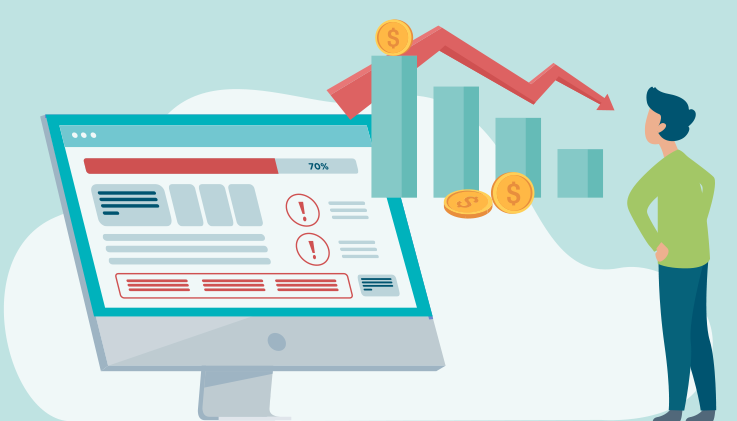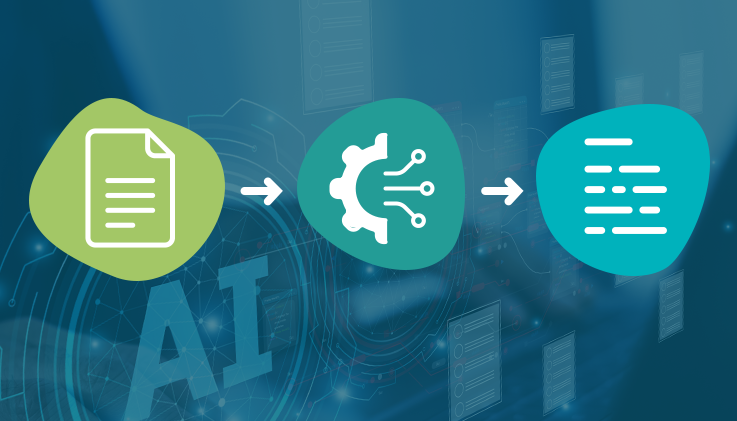Customer service is not a cakewalk. It is a difficult job and serves as the backbone of businesses. A balance between offering a great product and providing exceptional service through customer service software is the sweet spot that allows a brand to grow and earn the best return on investment (ROI).
Allow us to explain with the following scenarios.
Scenario 1: Your company offers a fantastic product + your customer service team offers excellent service = your brand sees exponential growth.
Scenario 2: Your company offers a fantastic product + your customer service is not very efficient = your brand does not grow very well. ROI is unsatisfactory.
Scenario 3: Your company does not offer a good product + your customer service team is efficient = your brand does not grow very well. ROI is unsatisfactory.
Scenario 4: Your company does not offer a good product + Your customer service is not very efficient = Your brand fails. No ROI.
As you can see, a good product coupled with good service allows a brand to grow. In a customer service environment, customer service software is crucial to delivering good customer support. Problems begin to appear as the software becomes old and outdated—and it acquires a legacy of its own (hence the term legacy software).
Legacy software: A barrier to providing excellent customer service
When customers interact with contact centers, what do you think is the biggest challenge for agents in delivering good customer service?
Switching between many tools? Keeping up with new information/updates? Having the right answers?
Dependence on legacy platforms can create a myriad of problems for customer support teams. A successful customer service center/contact center has to prioritize employees and provide them with training, tools, and resources to do their job well. To maintain a strong culture and recognition in the market, agents need to feel supported and have a high-quality employee experience. Is legacy software equipped to provide a fulfilling employee experience? No.
Companies use legacy systems because they find the changeover of necessary software and hardware difficult to execute. These systems might still be fulfilling critical business processes, and replacing them could cause interruptions in service delivery. In addition to the cost of replacing the systems and providing training to employees on the new systems, companies see red regarding their short-term goals and retreats. Choosing to let things be and ignoring critical system upgrades demonstrates gross mismanagement.
Also read: A Profitable Business Is A Customer Centric Business. Here’s Why!
Customer service software selection
Business leaders tasked with selecting the right customer service software have to consider various priorities across the organization. They have to take into account a wide range of possibilities with regard to customer service and service level agreements (SLAs), along with the organization’s priorities and ROI.
Consultations have to be made between managers, process designers, contact center heads, and IT and legal teams. Each business function has its own goals, needs, and objectives — and not all of these align with those of the customer service team.
When a legacy system supports your business functions, it implies that the system has been in place for a while. Fast-forward to the present, and customer journeys are becoming less linear and more complex than ever. Every company strives to create the best customer experience.
Those who know how to meet their customers wherever they are succeed. By contrast, businesses that force customers down a predetermined path, ignoring customer conveniences, do so because their legacy systems severely limit them.
Risks of using legacy software
With the rapid digitization and rapid adoption of cloud-based customer service software by most industries, the biggest risks of running a business with the help of legacy software are the likelihood of running out of support and little to no scalability and flexibility. Your customers and employees miss out on great features. Lack of adequate support can mean application instability, longer downtimes, and high costs of troubleshooting and maintenance.
Using outdated software means leaving vital business processes vulnerable to security threats. Vulnerable security means problems with regulatory authorities and legal requirements. Legacy software does not support increased production capacity after it has served for some time. All these factors combined let your competitors get ahead of you. We have listed down some disadvantages of using legacy software for customer support.
- Likely to run out of vendor support.
- Miss being on the cloud and cannot avoid on-premises systems.
- Little to no scalability and flexibility.
- You miss out on great features and automatic timely upgrades.
- You suffer application instability, and your systems crash often.
- High troubleshooting and maintenance costs and longer downtime.
- You are vulnerable to security threats.
- You have problems with regulatory authorities & legal requirements.
- Your competitors get ahead of you.
Also read: 8 Tips To Make Your Customer Service Process Economically Efficient Without Compromising On Quality
AI-powered customer service software
Priorities of business leaders when selecting customer service software are more or less the same throughout. These priorities are future-proofing customer experiences, finding a strategic edge against competitors, protecting revenues, and minimizing costs.
The helpdesk software you choose for your organization should offer your support teams and customers multi-channel support and support for emerging service channels. The software should also provide AI and automation capabilities, a 360-degree view of your customers, and help your agents provide proactive service. Another must-have requirement in your customer service software is instant chat, messaging support, and social media integrations.
Once you have your requirements listed, you need to take a look at the effort of implementation and use. In simpler words, it does not matter how robust a new software or platform may be; if it is difficult to implement or use, adoption and satisfaction will suffer. You do not want to choose software that impacts your agents’ ability to deliver effortless service experiences.
That is why when it comes to choosing the right customer service software for your business—one that is capable of delivering effortless customer service experiences and offers the fastest time-to-value—you cannot afford to take any chances.
With the advent of new technologies, customer service has evolved dramatically. Customer service software is now hosted in the cloud, enabling you to provide support from anywhere, 24x7.
Transform your business
With ThinkOwl, the cloud-based helpdesk software, it is an easy ride. You can create workflows, set automation rules, and leverage artificial intelligence for efficient case handling. In addition, the solution comes with various tools that enhance agents’ productivity and provide high scalability, supporting your business as it grows.
Moreover, ThinkOwl is cost-effective, as it does not incur any capital expenditure for hardware installations. Customer data, case history, or any type of valuable information is stored in the cloud and always safe.
Also read: Contact Center’s Secret Formula To Ensure Excellent Customer Experience
Just in case if you cannot ditch your legacy system, then no problem
What if somebody refuses to part with their legacy systems? There could be any number of reasons for a business to carry on with its legacy platforms. Can ThinkOwl help businesses prosper without destabilizing an existing legacy setup? The answer is yes.
ThinkOwl API allows the display of information from existing systems when relevant to the case at hand. Data flow between applications will be easy, and service operations can be managed from a single window. Additionally, the API enables businesses to develop any integration themselves.
When you connect ThinkOwl to other applications that your employees use every day, the AI-powered customer service software becomes their only working interface. This singular interface prevents employees from switching to other enterprise applications, as well as does away with tedious and often expensive integration endeavors.
ThinkOwl’s advanced features and 3rd-party software integrations
OwlDesk, the AI-powered cloud-based helpdesk software, easily integrates with customers’ existing software and legacy infrastructure to enable a seamless flow of data between systems. The software easily integrates with major enterprise resource planning (ERP), customer relationship management (CRM), and other cloud-based software.
OwlDesk can help leverage enterprise data more effectively to deliver richer customer experiences. Its integration capabilities also reduce performance issues, latency, and the overall cost of your enterprise technology stack. ThinkOwl empowers CX leaders to unlock the true potential of AI customer service. That is why, when it comes to providing customer support par excellence, OwlDesk by ThinkOwl is an appropriate choice. Sign up for a 30-day free trial now.













